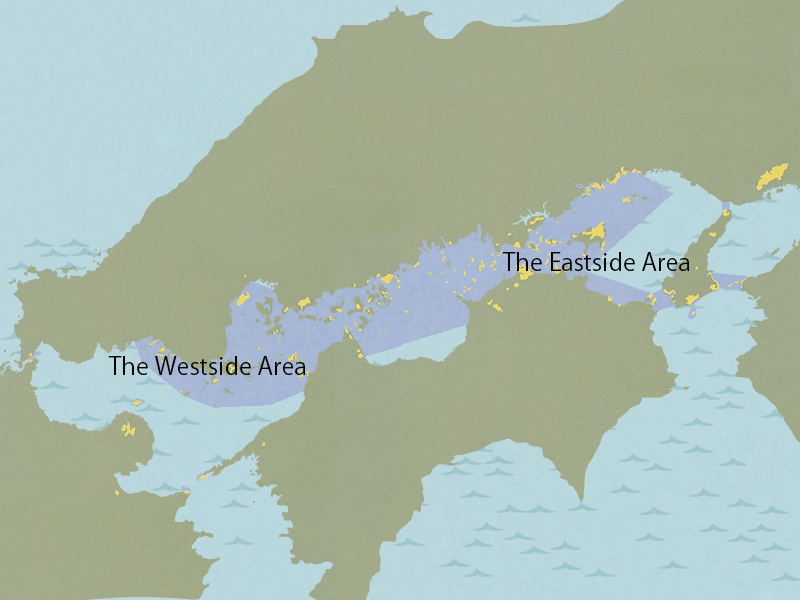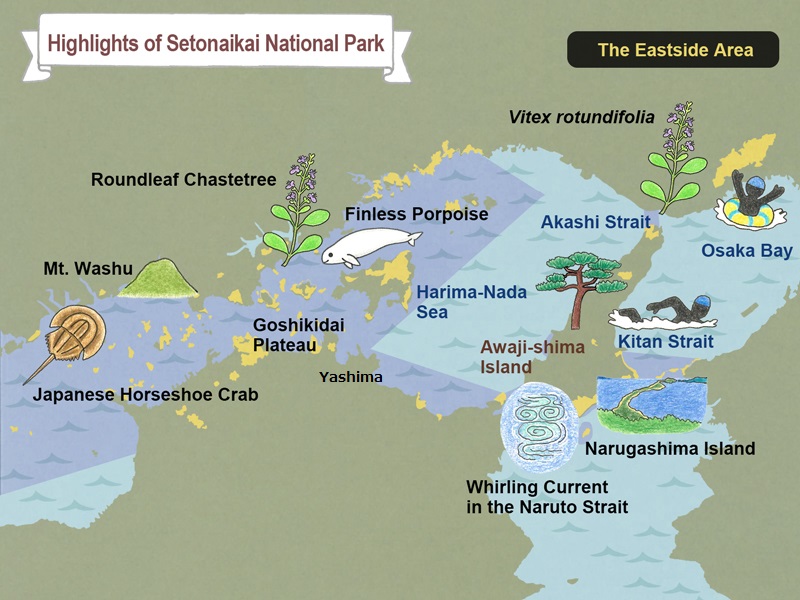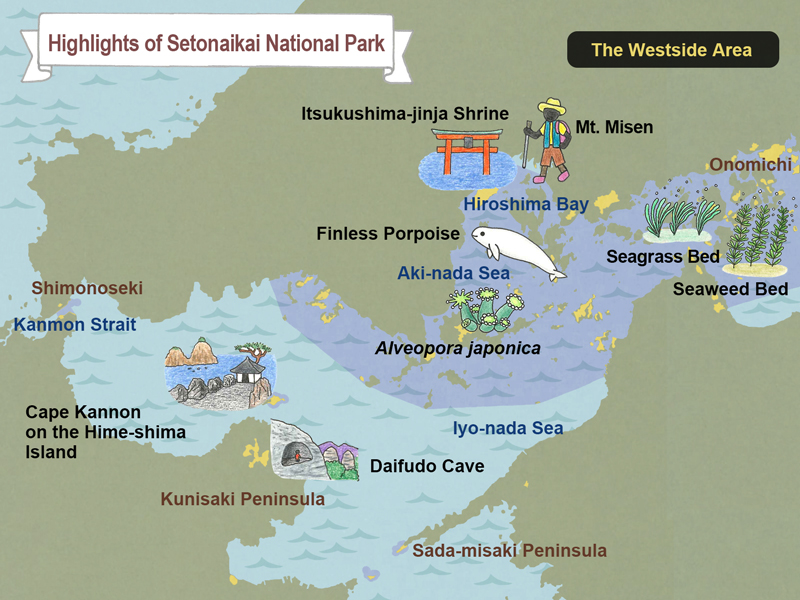- MOE
- National Parks of Japan
- Setonaikai National Park
- Guide of Highlights
main body
Highlights of Setonaikai National Park
Kanmon Strait (Kitakyushu City, Fukuoka Prefecture/Shimonoseki City, Yamaguchi Prefecture)
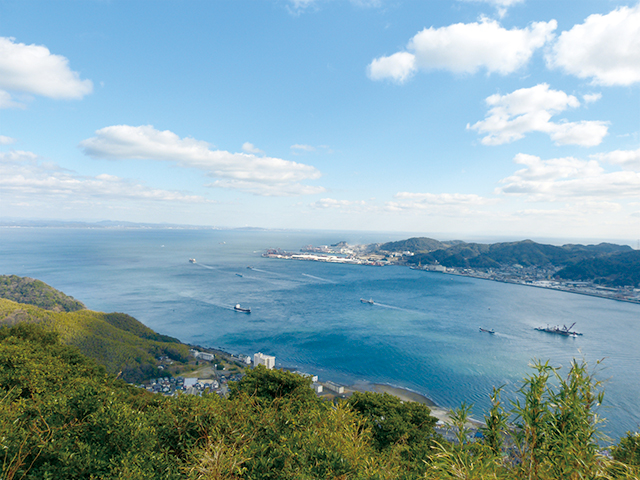
Kanmon Strait (Kitakyushu City, Fukuoka Prefecture/Shimonoseki City, Yamaguchi Prefecture)
Separating the main island and Kyushu, the area between Dannoura and Mekari is referred to as Hayatomo-no-Seto. The vantage points overlooking the Kanmon Strait are Hinoyama Park, Mimosusogawa Park, and Mekari Park.
Daifudo Cave on Kunisaki Peninsula (Kunisaki City, Oita Prefecture)

Daifudo Cave on Kunisaki Peninsula (Kunisaki City, Oita Prefecture)
Traditionally, the cave was a monks' training ground where they traveled along a road; it is now maintained as the Kunisaki Peninsula Long Trail. The cavern dug in a rock cliff overlooks steep and oddly shaped ridgelines.
Cape Kannon on the Hime-shima Island (Himeshima Village, Oita Prefecture)

Cape Kannon on the Hime-shima Island (Himeshima Village, Oita Prefecture)
The precipices of Cape Kannon consist of obsidian, and the obsidian rocks produced during the Stone Age were excavated from the ruins discovered across the nation. The area is recognized as a national special natural monument and designated as a Japanese Geopark.
Miyajima Itsukushima-jinja Shrine and Mt. Misen (Hatsukaichi City, Hiroshima Prefecture)
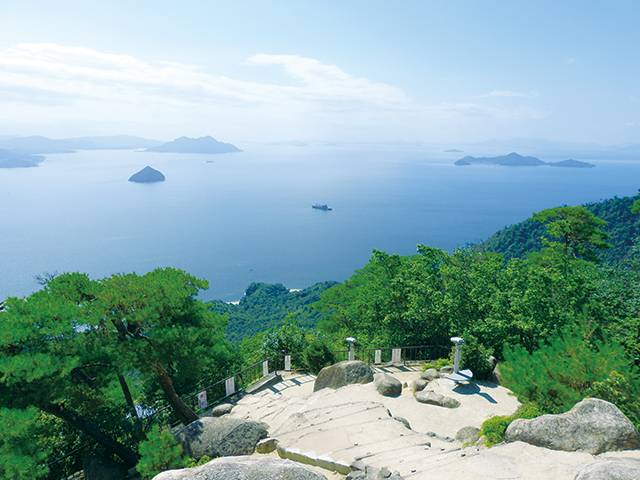
Miyajima Itsukushima-jinja Shrine and Mt. Misen (Hatsukaichi City, Hiroshima Prefecture)
The Miyajima Island, renowned as one of the Nihon Sankei (Japan's three most scenic places), is famous as one of the finest representative places of scenic beauty. Itsukushima-jinja Shrine was registered as a World Cultural Heritage Site in 1996, along with the adjacent Misen Primeval Forest (natural monument).
Mt. Misen

Mt. Misen
Located behind Itsukushima-jinja Shrine on Miyajima Island, Mt. Misen has been a center of mountain worship since ancient times, and it features primeval forests populated with original Abies firma and Tsuga sieboldii, and the southern Symplocos formosana. The mountain has an observatory and a hiking trail, making it an enjoyable climb for novice hikers.
Yashirojima Island (Suo-Oshima Island) Marine Park Zone (Suo-Oshima Town, Yamaguchi Prefecture)
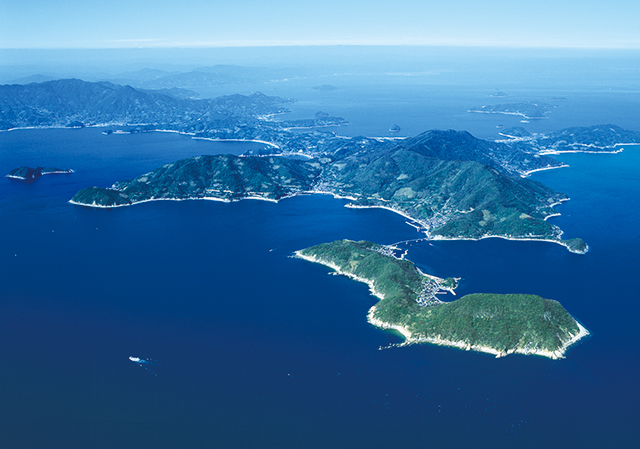
Yashirojima Island (Suo-Oshima Island) Marine Park Zone (Suo-Oshima Town, Yamaguchi Prefecture)
Japan's largest colonies of Alveopora japonica and favorable seagrass beds are located here. It is designated a marine park zone for protection.
Mt. Karei on the Oshima Island and the Shimanami Sea Route (Imabari City, Ehime Prefecture)

Mt. Karei on the Oshima Island and the Shimanami Sea Route (Imabari City, Ehime Prefecture)
The observatory on the Oshima Island offers excellent vantage points to observe the archipelago seascapes dotted with Hakatajima Island and Omishima Island, as well as Noshima Island where the old Murakami Navy was headquartered. Visitors can cross the Shimanami Sea Route by bicycle.
Mt. Sekizen (Kamijima Town, Ehime Prefecture)

Mt. Sekizen (Kamijima Town, Ehime Prefecture)
Mt. Sekizen, situated in the center of the Iwagijima Island is known for the magnificent cherry trees totaling over 3,000 trees. The beautiful landscapes created by the rows of cherry trees on the ridge line and the archipelago seascapes of the Geiyo Islands are simply breathtaking when seen from observatory at the top and from the trails.
Goshiki-iwa Rock in Sensuijima Island (Fukuyama City, Hiroshima Prefecture)
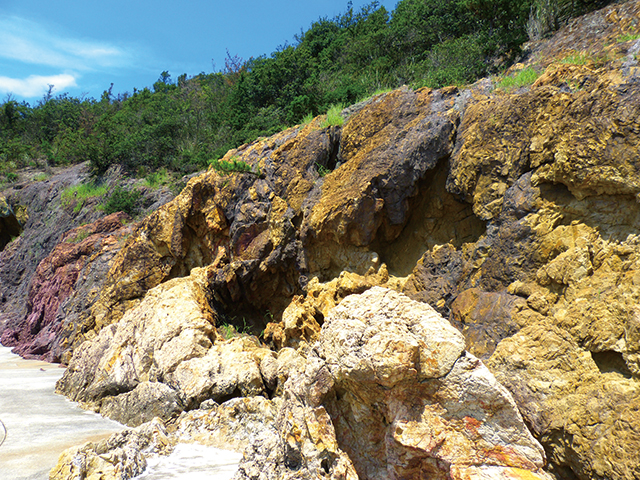
Goshiki-iwa Rock in Sensuijima Island (Fukuyama City, Hiroshima Prefecture)
The Sensuijima Island situated off of Tomonoura prospered in days of old as a port of call for ships awaiting better wind and current conditions. The area is famous as one of the finest places of scenic beauty as its beauty is said to be so great as to be capable of holding mountain hermits spellbound. Visitors can gaze upon magnificent outcrops of five-color rocks (Goshiki-iwa Rock) where rhyolitic tuff that have been extensively eroded.
Mt. Washu (Kurashiki City, Okayama Prefecture)
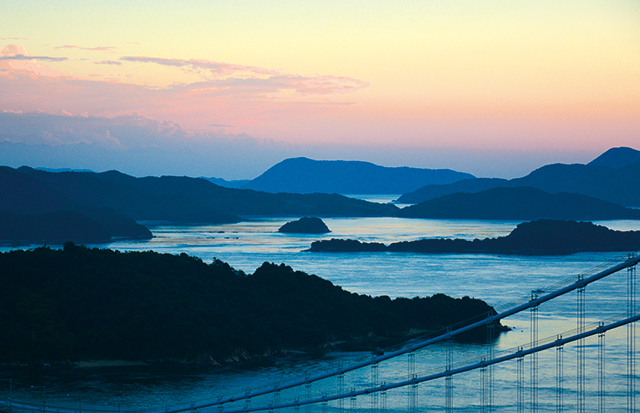
Mt. Washu (Kurashiki City, Okayama Prefecture)
The magnificent seascapes of the Bisan-Seto dotted with numerous islands and islets of the Shiwaku Islands, overlooking from Mt. Washu, are one of the finest examples of scenic beauty that became the decisive factor in designating the national park. The Shimotsui area encompassing Mt. Washu prospered as a port of call for ships awaiting better wind and current conditions.
Mt. Ojigatake (Kurashiki City and Tamano City, Okayama Prefecture)
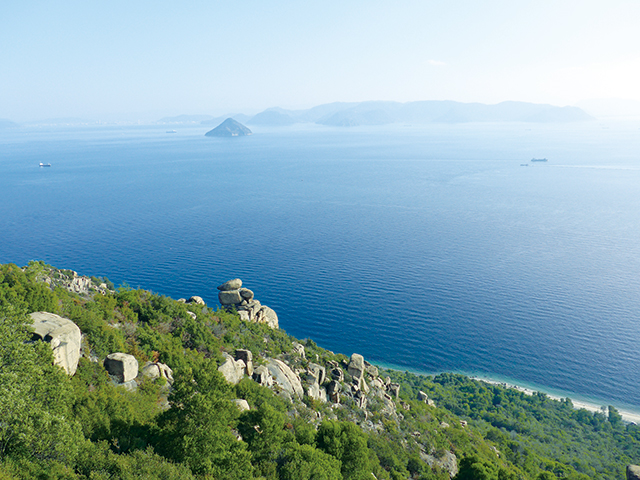
Mt. Ojigatake (Kurashiki City and Tamano City, Okayama Prefecture)
With its distinct appearance lined with gigantic granite rocks and oddly-shaped granite rocks, visitors can gaze upon the Bisan-Seto Strait from mountain top. The Shibukawa Beach situated at the base of the mountain is a beautiful stretch of sandy seashore dotted with pine trees and used as a bathing beach.
Yashima (Takamatsu City, Kagawa Prefecture)
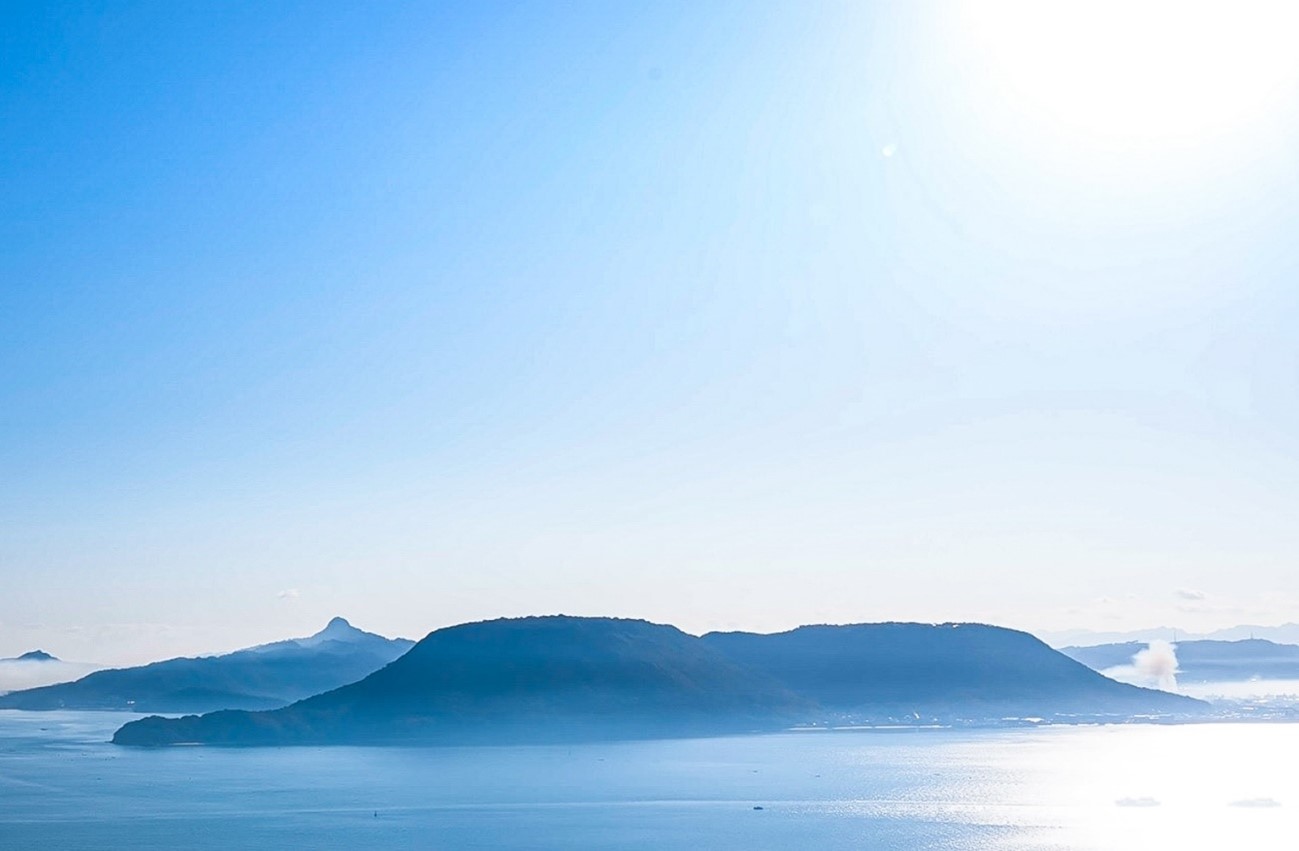
Yashima (Takamatsu City, Kagawa Prefecture)
Yashima (meaning “roof island”) is a mesa, or a flat-topped mountain surrounded by steep cliffs on all sides, and the many lookouts along the trail afford impressive views on clear days. Visiting Yashima offers an introduction to the history, geology, and plant and animal life of one of the first places in Japan to be designated a national park.
Goshikidai Plateau (Sakaide City and Takamatsu City, Kagawa Prefecture)

Goshikidai Plateau (Sakaide City and Takamatsu City, Kagawa Prefecture)
Goshikidai Plateau ("Five-Colored Plateau") is five constituent hills offering outdoor experience-based facilities, historic landmarks and old pilgrimage roads, where visitors can enjoy hiking, nature observation and exploring historical sites. The charming vista of evening landscape over the Bisan-Seto Strait is especially breathtaking.
Karanijima Islands (Tatsuno City, Hyogo Prefecture)
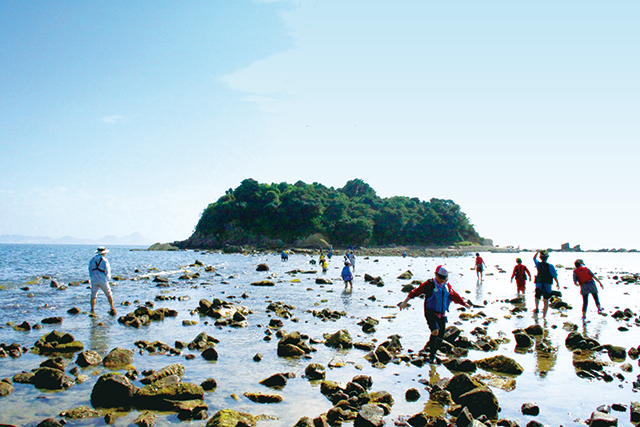
Karanijima Islands (Tatsuno City, Hyogo Prefecture)
The Karanijima Islands are three islets situated off the coast of Murotsu, an old post station established during the period of Emperor Jimmu that flourished as the largest post station during the Edo period when feudal lords traveled to reside in Edo periodically. During a spring tide, the tides go out and two islands connect by land to allow walking across the sea.
Whirling Current in the Naruto Strait

Whirling Current in the Naruto Strait
These whirling Current can be observed in various small and large sizes during high and low tide, and are created by the unique underwater geography of the Naruto Strait (combination of deep ocean trenches, shallow waters and fast tide flowing from Harima-nada Sea and the Kii Channel). During spring tide, the vortexes with a diameter of 20 m can be observed.
Narugashima Island (Sumoto City, Hyogo Prefecture)
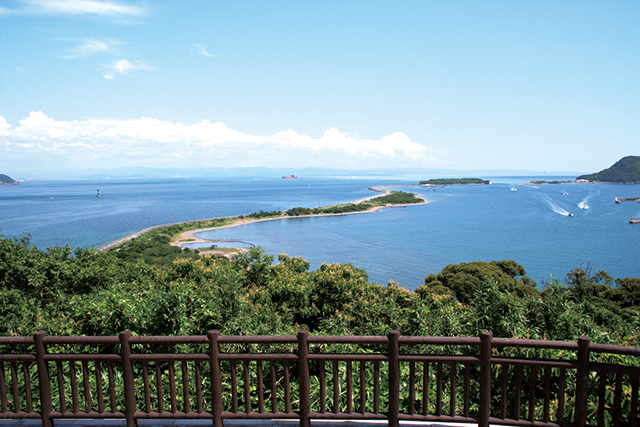
Narugashima Island (Sumoto City, Hyogo Prefecture)
The island is comprised of Mt. Naruyama on the north side of the island and a long, continuous sandbar extending for about 3 kilometers linking Takasaki on the south, as it was previously referred to as Awaji-Hashidate. The salt marsh situated in the heart of the island is inhabited by rare flora and fauna.
Kada / Tomogashima Island (Wakayama City, Wakayama Prefecture)
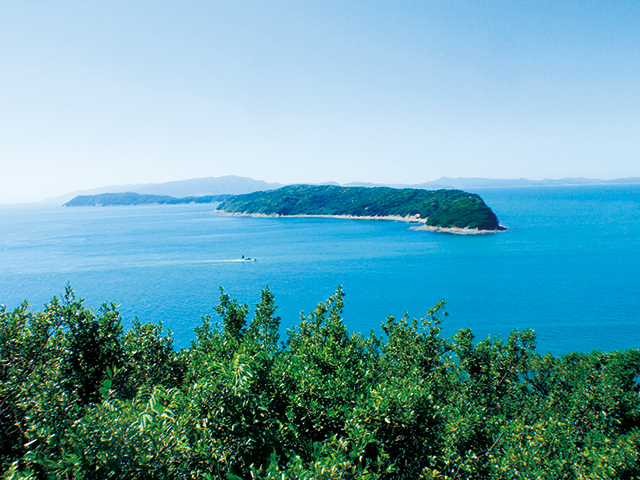
Kada / Tomogashima Island (Wakayama City, Wakayama Prefecture)
This area is a place where visitors can gaze upon unique landscapes of sea cliffs and wave-cut platforms created by the raised and sloped alternate layers of the Izumi Group, while the Kada Observatory affords a panoramic view of Tomogashima Island floating on the Kitan Strait.
Sea Bathing

Sea Bathing
Due to its remote position relative to the outer ocean, the Seto Inland Sea features beautiful sea-bathing locations distinguished by mild waves, white sandy beaches formed by the weathering of granite stone, and the green glow of surrounding pine forests that serve as a natural barrier for wind and sand. Some locations also exhibit sandbars or ripple marks related to the tide.
Wildlife & Plants
Seaglass Bed
Seaglass Bed
The Seto Inland Sea has many shallow waters where seagrass, and other seaweed beds thrive. Seagrass beds are referred to as "umi no yurikago" in Japanese (literally: sea cradles), and serve as a habitat and spawning ground for various sea creatures.
Alveopora japonica
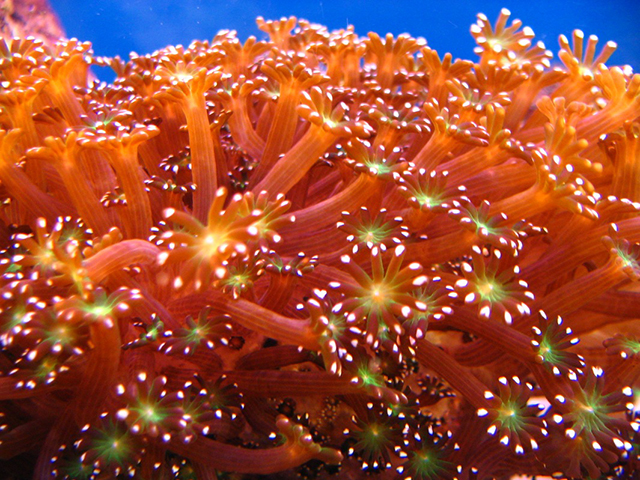
Alveopora japonica
This coral is an endemic species of temperate regions in East Asia, and is distinguished by a round skeleton and multiple polyps. The southern offshore of Suo-Oshima Island in Yamaguchi Prefecture are home to the world's largest colony of Alveopora japonica coral. It is the only area in Setonaikai National Park that has been designated a Marine Park Area.
Vitex rotundifolia

Vitex rotundifolia
A coastal evergreen shrub with a shape and leaves that can withstand heavy winds, dry conditions and saline environments. It can be found in coastal areas such as sandy beaches, and grows bluish purple flowers with a sweet fragrance from its upright branches during the period from July to September.
Japanese Red Pine, Japanese Black Pine (Pinus densiflora, Pinus thunbergii)
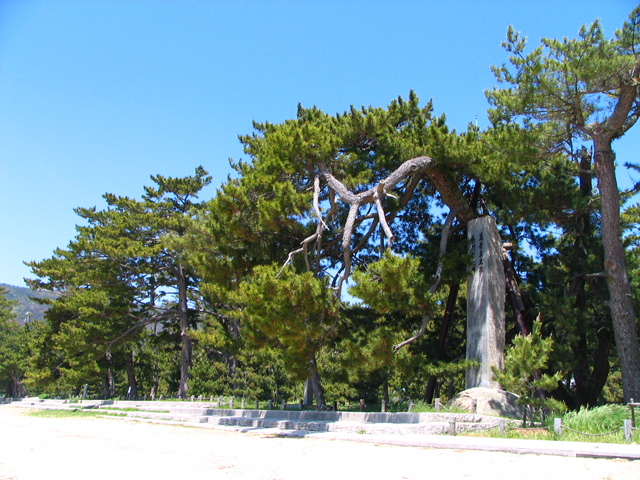
Japanese Red Pine, Japanese Black Pine (Pinus densiflora, Pinus thunbergii )
The Setouchi area contains precious natural forests but is for the most part made up of secondary forests populated with Pinus thunbergii and Pinus densiflora that form a cultural landscape, a distinctive feature of the Setouchi scenery. However, many pine trees have withered in recent years, and a transition to evergreen broadleaf trees can be observed.
Japanese Horseshoe Crab
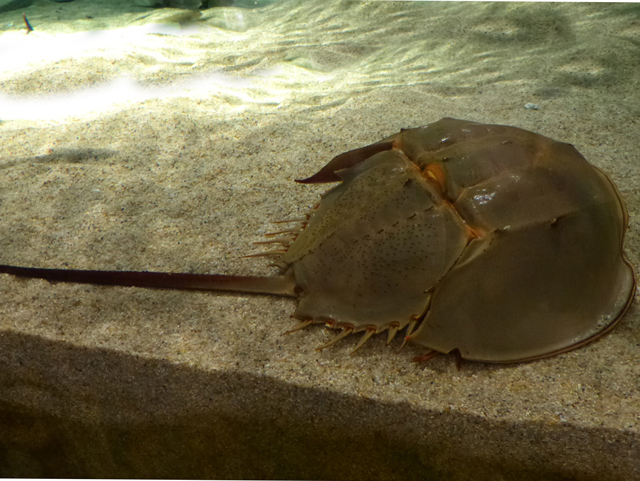
Japanese Horseshoe Crab
Sometimes referred to as a "living fossil," this crab inhabits the Seto Inland Sea area, which has shallow waters with mild waves, vast tidal flats and sandy beaches. It also occurs in some tidal flats in northern-Kyushu. While it can be found in Kasaoka City in Okayama Prefecture, and in Yamaguchi City in Yamaguchi Prefecture, its presence in these areas has decreased due to landfills and other factors.
Finless Porpoise
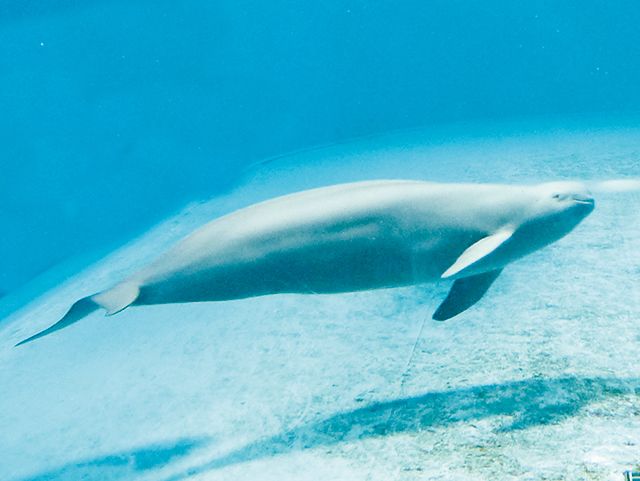
Finless Porpoise
A gray, smaller species of the dolphin that lacks a dorsal fin and can grow to 1.5-2 m. It can be found in Japan's coastal areas including the Sendai Bay, Ise Bay and the Seto Inland Sea. The population is reducing in the Seto Inland Sea has decreased due to a sharp decline in one of its food sources: the Ikanago fish. The latter are disappearing due to sea sand gathering work.
